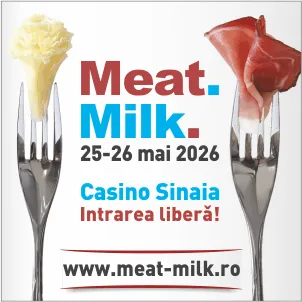1152

AI Model Accurately Predicts Methane Reduction from Feed Additives in Dairy Cattle
Reducing methane emissions from ruminants remains a major challenge for the dairy industry. Now, artificial intelligence (AI) offers a breakthrough by predicting the effectiveness of feed additives. A new study validates this approach across 13 commercial farms, marking a significant step toward more sustainable dairy production, DairyGlobal reports.
AI Model Development for Methane Emissions
Ruminant livestock production depends on microbial fermentation of feed to produce valuable dairy and meat products. However, this process also generates enteric methane emissions—a significant contributor to anthropogenic greenhouse gases.
To date, efforts to curb methane emissions have achieved limited success despite the use of various strategies.
In an earlier study, researchers from the Massachusetts Institute of Technology (MIT) and Metha Artificial Intelligence, Israel, developed an AI model using deep microbiome sequencing to predict the effect of feed additives on methane emissions.
The model uses sequenced rumen samples from a specific herd to construct microbiome networks and identify biomarkers associated with the effectiveness of feed additives in reducing methane output.
Validating the AI Model: A New Study
Their most recent study, published in Frontiers in Sustainable Food Systems, validated the model’s predictions using a commercial feed additive for methane mitigation and conducted hundreds of in situ methane measurements at 13 Holstein dairy farms in Israel.
The study’s primary aim was to validate the AI-based model's accuracy using a feed additive based on essential oils (Agolin Ruminant), known for its methane-reducing potential. This additive includes coriander seed oil, eugenol, geranyl acetate, and geraniol.
The validation included an extended in vivo methane monitoring protocol, with biweekly methane measurements conducted at the same time of day for each location over three months, resulting in at least seven measurement points.
To avoid seasonal effects and improve methodological robustness, validation was carried out on independent cohorts across 13 commercial farms in Israel, including both arid and mountainous areas.
On-Farm Conditions and Treatments
All cows were maintained on a standard total mixed ration with a forage-to-concentrate ratio of 32/68, while each farm adhered to its own nutritional regimen.
The selected feed additive was administered by each farm’s staff (1g/cow/day) for 60 days, mixed into the concentrate portion of the ration, and fed to 20 randomly selected cows at each location. Another 20 cows were randomly selected as controls and received the standard diet without the feed additive.
Results
Methane emissions were measured using the ATEX gas analyzer to evaluate and validate the model’s performance.
Enteric methane emissions dropped significantly in the treated groups following feed additive administration, compared to control groups. Reductions were observed in 11 of the 13 farms, ranging from as little as 0.1% to as much as 19%, with an overall average reduction of 9.86%. The remaining two farms showed a slight increase of 1.1% in methane emissions.
Model Accuracy and Implications
To assess the model’s accuracy, researchers compared the actual methane emissions with predictions generated by the AI model. They found that the model accurately forecasted the additive's effect at each farm—even in cases where the effect was minimal.
These results underscore the robustness and precision of the model in predicting enteric methane reductions and improving the performance of feed additives.
Moreover, the model serves as a vital tool for data-driven decision-making, playing a key role in advancing precision agriculture practices.




